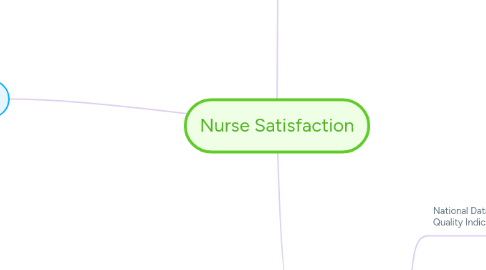
1. Intrapersonal
1.1. Autonomy
1.1.1. Meaning
1.1.1.1. Authority
1.1.1.2. Responsibility
1.1.1.3. Decision making
1.1.2. Professional autonomy
1.1.2.1. One of the most important determinants of nursing job satisfaction
1.1.2.1.1. Magnet Hopsital
1.1.2.1.2. Non Magnet Hospital
1.1.2.2. Critical Care nurses
1.1.2.2.1. Greater need for autonomy
1.1.2.2.2. Higher levels of autonomy than non-CCNs
1.1.2.2.3. Moderate job satisfaction and dissatisfaction with autonomy
1.1.2.3. Bachelor’s education compared to Associate’s
1.1.2.3.1. Bachelor more education about autonomous decision making
1.1.2.3.2. Lack of distinction of role distribution
1.1.3. Reaching maximum potential in professional role
1.1.3.1. Further education
1.1.3.2. Role enhancement
1.1.3.3. Support
1.1.3.4. Professional autonomy
1.1.3.4.1. Impact on staff retention
1.2. Opportunity for Advancement
1.3. Recognition
2. Interpersonal
2.1. National Database of Nursing Quality Indicators (NDNQI)
2.1.1. What is it?
2.1.1.1. National Nursing database
2.1.1.2. Quarterly and annual reports
2.1.1.2.1. Structure, process, and outcome indicators
2.1.2. About NDNQI
2.1.2.1. Established in 1998 by ANA
2.1.2.2. Created to fulfill nursing’s commitment to evaluate and improve patient care
2.1.2.3. 13 NDNQI indicators
2.1.3. One Indicator is RN satisfaction
2.1.3.1. NDNQI RN survey
2.1.3.1.1. 11 subscales that measure satisfaction
2.1.3.1.2. Improve work environments
2.1.3.1.3. Staff based on patient outcomes
2.1.3.1.4. Meet regulatory or state reporting requirements
2.2. Leadership Skills
2.2.1. Conflict Management
2.3. Team Building
2.3.1. Lateral Violence
2.3.2. Bullying
2.3.3. ANA Statement
2.3.4. Relationships
3. Extra Personal
3.1. Salary
3.2. Shift/Hours
3.3. Employer
3.4. Staffing
3.5. Safety
3.6. Positive Professional Environtment
3.6.1. Job Satisfaction Increased
3.6.1.1. Reduces short Staffing
3.6.2. Decreased turnover/burnout
3.6.3. Increased productivity
3.6.4. Increased morale
